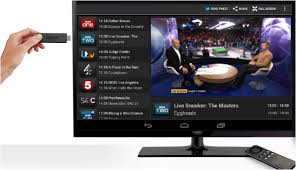

Developers use Vivado to generate a custom. It automatically drives the PS subsystem HW configuration and provides pre-defined connectivity for commonly used PL IPs based on the selected carrier card (e.g.

In Vivado, the Kria SOM Starter Kit Vivado board file is provided. Development starts with the Vivado tool to create an extensible hardware platform. User can intersect in different layers dependent on where their design diverge from Xilinx examples.ĭevelopers can create a custom Vitis platform if they require a distinct set of physical PL I/O peripherals than those provided in Xilinx generated platforms. After that, Vitis Accelerators and applications can be created in the Vitis Platform. Then a Vitis Platform can be generated on top of the Vivado Extensible design. A Vivado Extensible design is required first to in-take board information and create proper configurations. The diagram above shows the hierarchy between Vivado Extensible design, Vitis Platform and Vitis Accelerators.
#How to execute dtb firmware update#
In the Vitis tool flow, developers can leverage the Vitis Platform in the example designs and jump directly into the Vitis Accelerator flow, or they might need to update their platform using Vitis Platform flow before going into the Vitis Accelerator flow. Alternatively, if those advantages are not needed or wanted, developers can also use Vivado Accelerator flow.

The recommended tool for applications such as vision and video application is Vitis because Vitis supplies the Vitis_Accel_libraries and allows developers to develop quickly. If developers are using a Xilinx carrier card or have finished developing the needed base Linux designs for their custom carrier card, they will then need to generate application designs. If developers plan to create their own custom carrier card, they will need to first go through the custom carrier card flow before generating their design through the Vitis or Vivado based tool flows. The following is a decision tree to help guide developers through appropriate workflows: The choice of flow depends on HW target definition, where the target design intersects with Xilinx’s released reference designs, and tool preference. Based on the scope of hardware and design change there are four different flows developers can leverage when developing a custom application. Below is the tool flow that Xilinx uses to generate reference designs for Kria SOM.ĭevelopers may only need to touch parts of the flow to put their own applications on SOM. Developers can use the same generalized flows when creating platforms and designs for their own custom carrier card. Developers can leverage Xilinx provided Kria Vitis platforms that align to a given CC or they can create their own Vitis platform.

Vitis provides a design abstraction for provided “Vitis platforms” in which a subset of CC physical interface peripherals is defined, and developers can focus on generating an acceleration “overlay” within the context of that platform. Developers can use Vivado to generate a custom HW design which may include a different peripheral configuration set than pre-built Xilinx reference designs. The SOM board files in Vivado captures the hardware configuration of K26 SOM and maps connectivity to Xilinx provided carrier card peripherals.
#How to execute dtb firmware software#
Vivado and/or Vitis generates the PL design or bitstream it is integrated with Linux software components using PetaLinux. The Kria Starter Kit reference designs have a Linux operating system running in PS, which then runs applications that utilize HW accelerators implemented in PL. The Kria K26 SOM uses the XCK26 Zynq MPSoC chip containing both the Processor Subsystem (PS) and Programmable Logic (PL). The carrier card (CC) can be a Xilinx carrier card (e.g. The Kria SOM hardware design consist of the SOM (K26) and a carrier card. Use one or more of the Xilinx development tools (such as Vivado™, Vitis™, and PetaLinux) and open source tools (such as Linux Device Tree Generator/Compiler) to build your applications. With Kria SOMs, you can create and test your own custom applications and programmable logic (PL) functions. Kria™ SOM Accelerator and Custom Carrier Card Firmware Development ¶


 0 kommentar(er)
0 kommentar(er)
